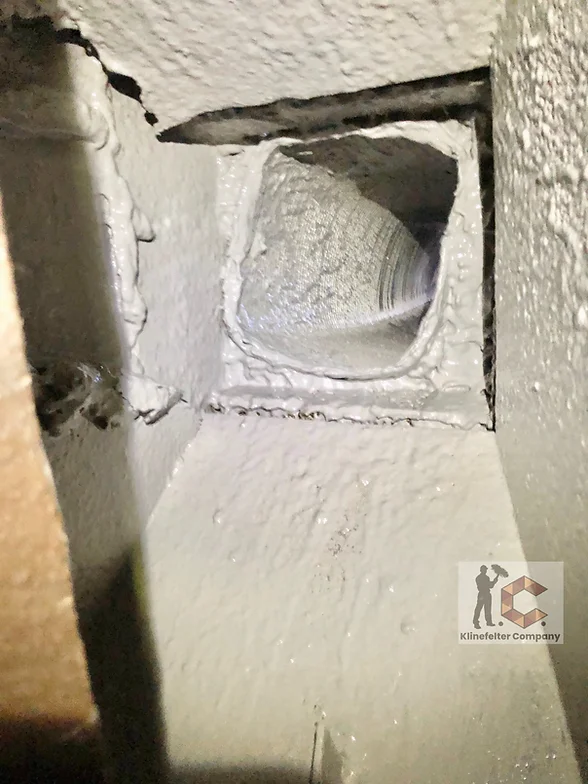The answer to the questions above is, yes, absolutely.
Unfortunately, chimneys are typically one of the most overlooked and neglected appliances in the American household. When your chimney isn’t clean, it doesn’t work as efficiently as it should and you may not be getting the most optimal heat for your home. When wood is burned inside the chimney it builds up soot, ash, and creosote deposits in the flue that needs to be removed annually at the very least. It’s not only dangerous to your home if you don’t get your chimney cleaned and inspected, but it is also hazardous to your health as well. Many of these contaminants that are emitted as derivatives of the combustion process have been proven to be carcinogens which are cancer-causing agents. Prior to your inspection, our highly qualified and experienced chimney sweeps will diagnose the condition of the chimney. Using the proper equipment, we will thoroughly clean it free of contaminants in its entirety, perform an inspection, then offer additional solutions for chimney repair and maintenance if necessary.
Even if you don’t use your fireplace, it still needs to be maintenanced. Dust and other airborne contaminants may still build up inside the flue. Additionally, factors such as foundation shifting, weather storms, and unwanted critter inhabitants may be in effect. Proper care and a regular cleaning/inspection will help your fireplace stay in the best condition and perform as efficiently as possible. If you’re in need of a reliable chimney repair specialist in Roseville, MN, you can count on us.


After the first stage, we then use a special camera to thoroughly see what’s happening inside the chimney. We will take multiple pictures and review them with you. After assessing the situation, we will confirm the proper construction necessary and the condition of concealed portions of the chimney structure and the flue. If there’s anything that presents a concern your chimney sweep will guide you in the next steps you need to take, which may conclude to a new 316 Heavy Wall stainless steel chimney liner. Some common examples of liner damage include any voids, gaps, or cracks in the clay lining system and evidence of unwanted moisture or condensation seeping in.
Have a gas fireplace? Carbon monoxide can leak into your home if you don’t take proper precautions. Although you do not need the same kind of cleaning as a wood-burning fireplace, routine inspections are still just as necessary to make sure that the liner to the gas unit is completely connected and that there are no rips, tears, or obstructions in your lining system that could result in a carbon monoxide leak in your home. We will help with that too!
The National Fire Protection Association recommends that homeowners have their chimneys inspected at least once a year. Besides needing one based on a yearly routine, a chimney inspection must be performed if there are black, oily spots on the walls of your fireplace, poorly burning fires with spotty heat efficiency, unusual odors coming from the fireplace, and animals making noise inside the walls of your chimney. Special events may also be a reason for an inspection. Such as buying a new property or if there has been some kind of structural hazard change to the chimney itself (i.e. the chimney was damaged during a storm or struck by lightning).
Here at Klinefelter Company, it's our job to ensure that your chimney and venting systems are safe and operating at optimum efficiency levels.
Initially, your chimney technician will visually verify that the chimney is structurally sound, both interior and exterior and that the chimney is free of obstructions and combustible deposits, such as soot and creosote.
The National Fire Protection Association (NFPA) recommends that a chimney and its vents
be inspected annually. These serve as a baseline safety measure to identify any potential
problems before they escalate. The frequency of cleaning, however, depends on how the
chimney is used:
Creosote is a highly flammable, tar-like substance that builds up on the walls of a chimney when wood is burned. Along with being messy, it is the leading cause of chimney fires, a dangerous occurence. Buildup of creosote that is as little as 1/4 inch thick is enough to be a fire hazard, and professional cleaning is the only way to safely remove it. By explaining this direct relationship between creosote and fire risk, a professional cleaning service is positioned as a life-saving necessity, not a simple chore.
A professional chimney cleaning and inspection involves a thorough, multi-step process:
Yes, a chimney used with a gas fireplace still requires annual inspection and cleaning.
While gas is considered a cleaner-burning fuel and does not produce creosote, it can still
cause other problems.